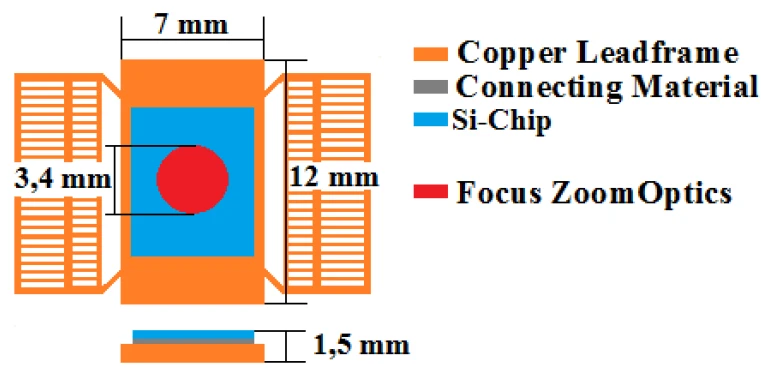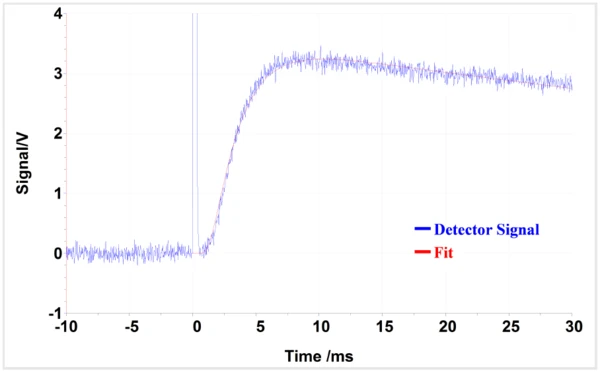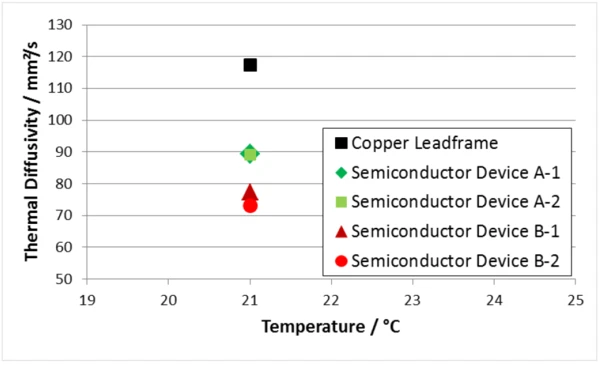Introduction
Thanks to continuing development in the electronics industry, the size of electronic components has drastically reduced in recent years. A related issue has been improvements in efficiency: Reductions in component size translate to less space for heat dissipation − while the amount of heat being generated is on the rise. To compensate, electronic components must have a high Thermal ConductivityThermal conductivity (λ with the unit W/(m•K)) describes the transport of energy – in the form of heat – through a body of mass as the result of a temperature gradient (see fig. 1). According to the second law of thermodynamics, heat always flows in the direction of the lower temperature.thermal conductivity for fast heat control.
The LFA 467 HyperFlash® allows for Thermal ConductivityThermal conductivity (λ with the unit W/(m•K)) describes the transport of energy – in the form of heat – through a body of mass as the result of a temperature gradient (see fig. 1). According to the second law of thermodynamics, heat always flows in the direction of the lower temperature.thermal conductivity measurements on the smallest of electronic components. Its fast data acquisition rate of 2 MHz makes measurement on very thin samples possible, while the patented ZoomOptics allows user to focus exclusively on the relevant sample areas.
Samples and Experimental
A total of five semiconductor devices were investigated:
- 1 copper lead frame without structure
- 2 structurally identical semiconductor devices with structure A
- 2 structurally identical semiconductor devices with structure B
The semiconductor devices consist of a copper leadframe onto which an Si chip was applied by means of connecting material (e.g., adhesive or solder). Semiconductor devices A and B differ only with regard to the connecting material. Figure 1 shows the schematic of such a sample.
The measurements were carried out with the LFA 467 HyperFlash® at room temperature. The entire sample was illuminated; the detector, however, was focused on a diameter of only 3.4 mm by means of the ZoomOptics , see figure 1.

Results and Discussion
The basic requirement for meaningful results is good agreement between the detector signal and the mathematical fit. Despite the radiation peak at the beginning of the signal (caused by the fact that the sample geometry is not ideal), this applies to all measurements, as shown in figure 2.
The results of all samples at room temperature are depicted in figure 3.
The measured value of the copper lead frame without structure was identical to the literature value for copper (117 mm²/s [1]). The Thermal DiffusivityThermal diffusivity (a with the unit mm2/s) is a material-specific property for characterizing unsteady heat conduction. This value describes how quickly a material reacts to a change in temperature.thermal diffusivity of the structurally identical semiconductor devices A-1 and A-2 barely differ from one another, which attests to the good reproducibility of the measurement (green).
Semiconductor devices B-1 and B-2 yield a considerably lower Thermal DiffusivityThermal diffusivity (a with the unit mm2/s) is a material-specific property for characterizing unsteady heat conduction. This value describes how quickly a material reacts to a change in temperature.thermal diffusivity (red) due to a different connecting material. However, when comparing the two components B-1 and B-2, one will again find reproducibility in the measurement results. The difference of approx. 5% indicates a higher Contact ResistanceAccording to the second law of thermodynamics, heat transfer between two systems always moves in the direction from higher to lower temperatures. The amount of thermal energy transferred by heat conduction, e.g., through a wall of a building, is influenced by the thermal resistances of the concrete wall and the insulation layer.contact resistance for B-2 and thus a weaker thermal connection between the Si chip and the copper.


Summary
The LFA 467 HyperFlash® with ZoomOptics allows for the investigation of small samples or of only select areas within a sample. Peripheral areas or areas with differing sample thickness can thus be purposefully excluded, considerably increasing both the measurement’s precision and the meaningfulness of its results.